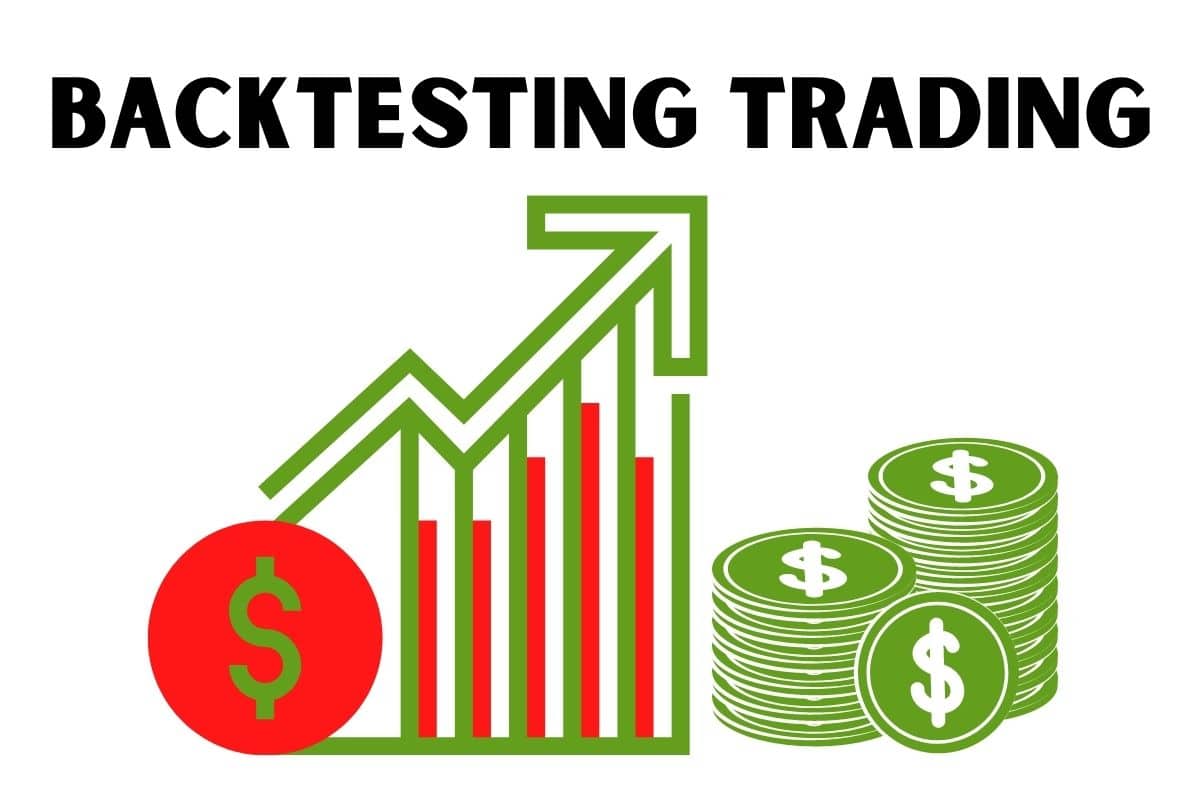For developed economies, hyperinflation is a rare occurrence, but it has happened frequently throughout history, examples are in nations like China, Germany, Russia, Hungary, and Georgia.
What Is Hyperinflation
In economics, you use hyperinflation to describe situations where all goods and services experience uncontrollable price increases over a specific time frame. Alternatively put, hyperinflation is a very rapid inflation rate.
Rapid, excessive, and unrestrained increases in general prices in an economy are what you refer to as hyperinflation. Hyperinflation is rapidly increasing inflation. When a central bank prints too much money and conditions arise that affect the underlying production economy, hyperinflation may result.
It describes a situation in which prices for goods and services skyrocket over a set time frame. As supply cannot keep up with demand, hyperinflation can result in a spike in the price of necessities like food and fuel. Even though situations involving hyperinflation are typically uncommon, once they start, they can get out of hand. You use hyperinflation to describe inflation when it increases by more than 50% per month. Countries like China, Hungary, etc are a few examples of hyperinflation
Understanding Hyperinflation
The Bureau of Labor Statistics uses the Consumer Price Index (CPI), which gauges how much a dollar can buy, and calculate inflation. The CPI is an index of prices for roughly 94,000 goods and services, 8,000 rental housing quotes, and prices for clothing, household goods, prescription drugs, pre-owned cars, postage, and airfare.
The Federal Reserve generally seeks to maintain long-term inflation at 2% or less because it views this level as being healthy. Any rate higher than 2% is unhealthy. Not just a high inflation rate, hyperinflation is a severe form of inflation.
What Is Hyperinflation in History
In history, there are a few examples like Hungary during the first half of 1946, there the worst instance of hyperinflation ever documented. With prices doubling roughly every 15.6 hours during the height of Hungary’s inflation, the CATO study calculates that the daily inflation rate was 195 percent, for a monthly inflation rate of 13.6 quadrillion percent.
The situation was so bad that the government created a special currency just for paying taxes and postage that they adjust daily via radio. The pengo was eventually replaced later that year during a currency revaluation, but at the time of the replacement in August 1946, it’s thought that the total value of all the Hungarian banknotes in use was equivalent to one-thousandth of a US dollar.
Hyperinflation Examples
There are several examples of hyperinflation that have occurred over the years, they include :
#1. Zimbabwe
One of the most recent examples of hyperinflation in Zimbabwe. The economy experienced hyperinflation beginning in March 2007 and lasting until the beginning of 2009. It averaged 98% per day. After the nation went through several droughts and a subsequent decline in GDP, the country’s hyperinflationary period started in 1999.
As a result, the nation was compelled to borrow more money than it could pay back, which led to an increase in government spending. It raised taxes to fund bonuses for veterans of the independence war, became part of the Congo war, and borrowed money from the IMF to advance the development and raise living standards for the populace.
To cover the costs, the government started printing money, which increased inflation and led to an exodus of citizens seeking economic relief in other nations. By 2010, almost 1.3 million people had left, and the economy was in ruins.
#2. Germany
Perhaps the most well-known and extensively studied hyperinflation was that which occurred in Germany in 1922–1923. Its roots were in the harsh provisions of the Versailles Treaty, which required Germany to give up a large portion of its productive land to France, Belgium, and Poland in exchange for payment of punitive reparations “in gold or kind.”
Germany, which was already heavily indebted due to its war debts, found it difficult to pay the reparations right away. It had to print money to buy gold because of the sharp decline in its currency exchange rate. Germany missed its reparations payment in the first quarter of 1923. France and Belgium invaded Germany’s Ruhr Valley industrial region to seize goods as payment. German workers ceased their work as a form of passive resistance against the invasion, but the government continued to pay their salaries with freshly printed money from the central bank.
The introduction of a new currency, the Rentenmark, backed by mortgages on real estate, along with the cessation of money printing and deficit monetization, eventually put an end to the hyperinflation. The Reichsmark, which was introduced in 1924 to replace the Rentenmark, was backed by gold, and the United States gave Germany loans to aid in the nation’s economic recovery. Germany’s hyperinflation is one of the most widely known examples of hyperinflation in the world.
#3. Yugoslavia
However, in the 1980s, economic and political crises sparked civil wars that split the nation once again into its constituent republics, and by 1992, only Serbia and Montenegro remained united.
As a result of the conflict and the absence of an internal market, the government began printing money to replenish its coffers. The issue grew worse as a result of unchecked government spending, inefficiency, corruption, and UN sanctions in 1992 and 1993.
Prices were increasing by 313,000,000% a month at the beginning of 1994. When people received their paychecks, they immediately began to spend their money; many in Serbia purchased their supplies in neighboring Hungary. Farmers stopped producing as a result of attempts at price controls. The black market for US dollars and German marks rose dramatically.
Slobodan Milosevic, the leader of Serbia, eventually consented to adopt a new currency, the “new dinar,” which was backed by gold and hard currency reserves, to quell social unrest and negotiate an end to UN sanctions. One of the few examples is the Yugoslavia hyperinflation of 1994
Causes of Hyperinflation
#1. Excessive Money Supply
In general, central banks regulate the total money supply. The amount of money in circulation can be increased by central banks in situations that historically call for one, such as a recession or depression. This action aims to encourage lending by banks, as well as borrowing and spending by consumers, businesses, and other entities. However, if the expansion of the money supply does not coincide with an expansion of the economy as indicated by GDP growth, hyperinflation may result. The consumer surplus fuels inflation as consumers pay higher prices. Hyperinflation is brought on by a cycle of rising inflation rates.
#2. Demand-Pull Inflation
A situation where the total demand exceeds the total supply is known as demand-pull inflation. As a result, prices rise quickly because there aren’t enough goods and services to satisfy the rising demand from both consumers and businesses.
Oftentimes, the two go together. Prices soar when there is too much money floating around. Customers anticipate continued inflation once they understand what is happening. To avoid later price increases, they make more purchases now. Inflation is made worse by this excessive demand. A shortage caused by consumer stockpiling is even worse.
Effects of Hyperinflation
#1. Currency Depreciation
When a nation experiences hyperinflation, the value of its currency plummets, sending import prices through the roof. This, in turn, speeds up domestic inflation. As a result, companies find themselves unable to pay for raw materials and components, and as capital leaves the nation in search of safer havens, investment suffers. The government’s tax revenue declines, making it impossible for it to borrow money in its currency from outside sources or its people. To obtain necessary foreign exchange, pay its employees, and cover the costs of necessary services, it prints money. As a result, prices continue to rise, triggering hyperinflation.
#2. Decline in Savings
That practice, though, sets off a vicious cycle where people buy more things as prices rise, which raises demand and drives up prices even more. Because of this, the store-of-value function of money is destroyed as overall savings decline along with the value of the currency. Additionally, people show a greater interest in purchasing more food. Major economic collapse almost always results from hyperinflation when it is left unchecked.
#3. Decrease in the Standard of Living
Prices for goods and services will continue to rise in the event of hyperinflation or continuously rising inflation where wages are either held constant or not increased sufficiently to keep up with the rate of inflation, leaving people unable to cover their living expenses.
#4. Hoarding/Food Shortage
People start to stockpile goods like food as a result of the onset of hyperinflation and an increase in prices. They anticipate further price increases because they have already increased. They, therefore, go shopping and buy more goods than they would typically to save money. For instance, they might decide to purchase five gallons of oil rather than just one. Consequently, there will be a food shortage.
How to Prepare for Hyperinflation
It is crucial to keep in mind that hyperinflation is a rare occurrence, particularly in developed nations where a central bank places a high priority on containing and managing inflationary periods. To mitigate the effects of high inflation rates on the economy, there are some steps you can take.
You can minimize losses during inflationary periods by maintaining a diversified and balanced portfolio. Real estate and commodities, which tend to appreciate during these times, can lessen the negative effects of inflation. Because the principal you have invested in TIPS will increase in value over time, it can act as a hedge against rising inflation.
Controlling Inflation in the United States: The Federal Reserve
The Federal Reserve in the United States uses monetary policies to control inflation. Through a contractionary monetary policy, that lowers the amount of money in the economy, the Federal Reserve controls inflation. Those who have money tend to favor saving money more as the money supply is on the decline. It lowers spending, slows the economy, and lowers the inflation rate.
The Federal Reserve uses a variety of instruments to carry out a contractionary policy, including raising interest rates, tightening bank reserve requirements, and directly or indirectly reducing the money supply.
Who Benefits From Hyperinflation?
Borrowers and exporters benefit from this. Exporters can profit from the hyperinflation that is afflicting their nations. That is because exports have become less expensive as a result of the local currency’s depreciation. The exporter then sells these goods and receives cash payments in foreign currencies, which retain their value. Borrowers also benefit in some ways because their loans are essentially canceled. Their debt is insignificant in comparison because the local currency is constantly depreciating.
What Does Hyperinflation Do To A Country?
- Currency Value Depreciates
The currency depreciates in the FOREX market to an all-time low during a hyperinflationary period. The public is very uncertain and afraid about the true value of the domestic currency due to all the negative triggers in the economy and financial market. Foreign investors withdraw their investments and pull back first, as a result.
Due to the depreciation of the local currency brought on by hyperinflation, bank loans and advances almost cease to exist. Additionally, as people stop investing, the deposits fall. As a result, these banks and financial institutions experience financial losses and occasionally go out of business, causing domestic unemployment to reach a record high.
What Stops Hyperinflation?
Drastic measures like enacting the shock therapy of cutting back on government spending or changing the currency basis are used to end hyperinflation. Dollarization, the practice of using a foreign currency—not necessarily the U.S. dollar—as the primary national unit of exchange, is one way this could manifest itself. Everything from radical tax cuts and reductions in government spending to the introduction of new currencies is a few examples of ways to stop hyperinflation.
Only when governments stop spending excessively and when people and businesses once again have faith in the currency will hyperinflation come to an end. A more stable currency, like the U.S. dollar, must typically be used to peg the value of the currency in question.
Additionally, to cool down an overheating economy, central banks can enact contractionary monetary policy measures. Central banks can reduce consumer and business spending by increasing interest rates and increasing the cost of credit. Spending fewer results in less demand, which can help relieve pressure on supplies.
Is Hyperinflation Good For The Economy?
A country’s economy can be severely harmed by hyperinflation in several ways. One of the first things that have historically occurred during hyperinflationary periods is that anxious consumers start to hoard goods, escalating supply shortages and raising prices even higher. Hyperinflation can have disastrous effects on both people and economies. Because wages cannot keep up with the rate of price increases in consumer goods, consumers cannot afford to buy necessities.
Conclusion
The effects of hyperinflation extend beyond just the residents and businesses of the affected nation; it may also harm those nations’ foreign trading partners. Thankfully, it is uncommon and typically linked to significant political disturbances like wars and chaotic regime changes.
Hyperinflation FAQs
What Is Hyperinflation?
Hyperinflation is a term used in economics to describe situations where all goods and services experience uncontrollable price increases over a specific time frame. Alternatively put, hyperinflation is a very rapid inflation rate
Who Benefits From Hyperinflation?
Borrowers and exporters benefit from this. Exporters can profit from the hyperinflation that is afflicting their nations as exports becomes cheaper, while the exporter then sells these goods and receives cash payments in foreign currencies, which retain their value
What Are The Effects of Hyperinflation?
- Currency depreciation
- Fall in savings
Related Articles
- DEMAND-PULL INFLATION: DEFINITION, CAUSES & EXAMPLES
- BEST TIPS ON HOW TO FIGHT INFLATION IN 2023
- WHAT IS BREXIT: Meaning, Deals, and Consequences
- ECONOMIC COLLAPSE: How Close are we to Total Collapse
- HOW DOES INFLATION AFFECT INTEREST RATES?: Effects of Inflation On
- TREASURY INFLATION PROTECTED SECURITIES (TIPS): How It Works






